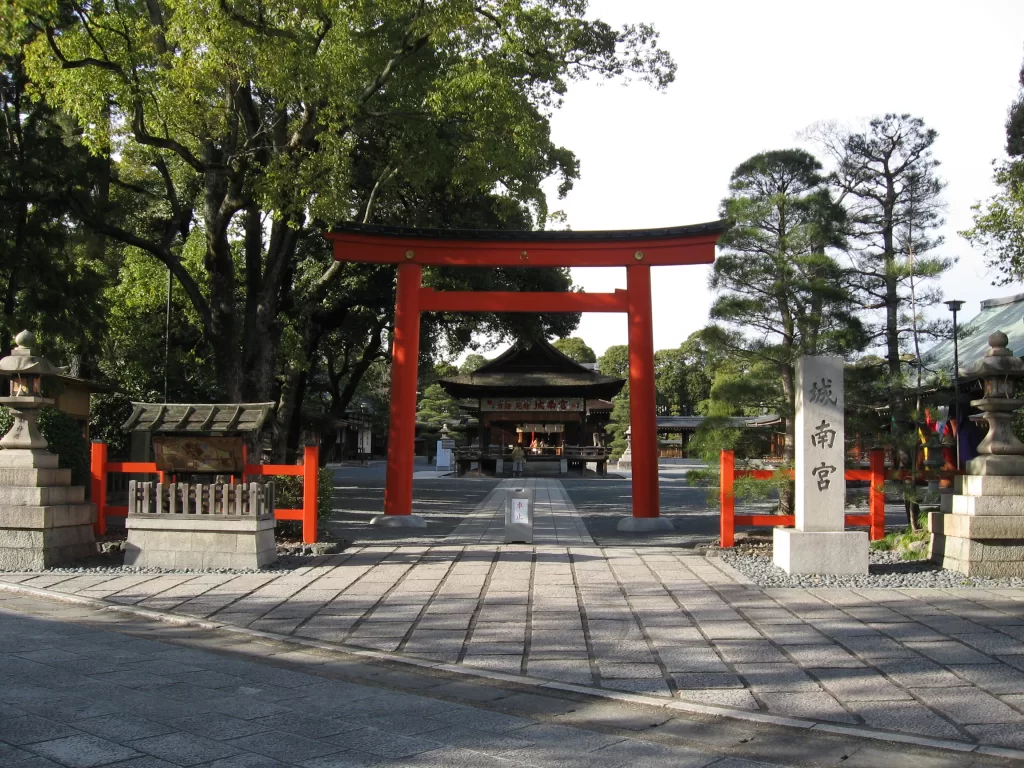Yutate Kagura: A Prayer for Good Luck and Health at Jonangu Shrine
Introduction to Yutate-kagura
Yutate Kagura, or Yudate-kagura, is an age-old Japanese tradition. Still practiced today, it is primarily performed to bring about good health and ward off diseases and calamities. Interestingly, it also symbolizes a rich harvest of five grain crops. This religious rite gains its uniqueness from the incorporation of boiling water that shocks the senses but fetches blessings.
Preparing for Yutate Kagura
To commence the remarkable event, sacred spring water is brought to boil in an eye-catching large pot positioned in the courtyard in front of the prayer hall at Jonangu Shrine. A senior priestess then gracefully approaches this setup. The initial process involves stirring in sake, rice, and salt into the boiling water which acts as offerings to the deities.
Instantly following these offerings, sweeping movements are made by the priestess with two leafy bamboo branches that she holds. She dips these branches into the large pot and with commanding gestures throws boiling water onto onlookers, a sight which is depicted as picture-perfect as she sharply cuts through the rising steam. It is one of the most fascinating Kyoto events in Janurary.
Beyond Boiling Water: The Accompanying Rituals
The boiling water experience stands out as a highlight of this event, though there are other captivating procedures that add depth to it. Prior to the main event, blessings are cast upon everyone and offerings made to the gods. An invigorating Kagura dance follows which not only purifies but also consecrates the bamboo used later during the ritual.
Once these rituals conclude, the bamboo – now soaked with sacred elements – becomes accessible for people seeking good luck. Displaying this bamboo within one’s home supposedly magnifies fortunes for its dwellers.

Jonangu Shrine : Home to Kagura Extravaganza
Serving as backdrop to this fascinating annual ceremony is Jonangu Shrine situated within Fushimi Ward in Kyoto City. Historically it was established with a noble intention – protection of both nation and capital during its relocation to Kyoto back in Heian Period.
The shrine has gained popularity not just with local residents but also tourists who flock here during Hatsumode (first shrine visit for New Year) and Setsubun festival periods praying for prosperity & wellbeing and seeking red seal stamps or amulets blessing. Each season brings unique charm to this shrine especially spring when Weeping Plums and Camellia Festival lures least expecting visitors towards its gardens blooming with flowers.
Embracing Spirituality through Shimotsuki Kagura
Marked on calendars throughout Japan as Shimotsuki Kagura, this extraordinary celebration offers glimpses of Japan’s cultural past through shrines like Shirahata in Fujisawa city or Seimei in Kyoto’s Jokyo ward among others.
Stereotyping Miyazaki Hayao’s famous anime “Spirited Away”, one wouldn’t be far from mistaking similarities between them.
Held each January in Kyoto’s Jonangru Shrine; Yutate Kagura ritual begins with Miko Mai – purification dance left to four Miko (shrine maidens). With fans and Kagura bells they use dance moves on prayer stage thereby commencing bonanza that ensues later.
Following this ceremony’s conclusion; attention diverts towards main building of Jonangu Shrine where large pot begins to boil signaling commencement of second phase. Miko maidens holding lucky Fukusasa (bamboo branch) splash sacred boiling water over audience claiming it strips away ill spirits while safeguarding against illnesses and calamities!
Post ritual spectators can expect lucky bamboo leaves from shrine handed over as tokens of prayers answered by deities dwelling within shrine boundaries.
The intensity brought forth by priests and Miko maidens while performing solemn Yutate Kagura converts bystanders into proactively experiencing true Japanese culture seeped heavily into religion.
Given your inclination towards understanding Japan holistically through its traditions observed since yesteryears – never miss attending traditional ritual called “Yutate Kagura”. Make it point visiting grandeur unfolding within precincts of Kyoto’s prominent Jonangu Shrine.
If you’re looking for an extraordinary cultural experience in Kyoto, Don’t miss out on Musha Jinji at Kamigamo Shrine. This ancient archery ritual is held annually in mid-January and is deeply rooted in Japan’s rich history and traditions.